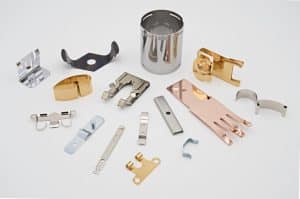
In our fast-paced global economy, manufacturing companies are continuously searching for ways to enhance their operations, streamline their processes, and gain a competitive edge. Cloud-enabled systems have emerged as a transformative technology that enables greater agility, flexibility, and integration across the enterprise, and the team at European Springs is eager to learn more.
In this blog, we’ll explore how the manufacturing industry is embracing cloud-enabled solutions to improve operational efficiency, reduce costs, and improve collaboration. However, we also acknowledge this shift comes with several challenges that require a central manufacturing data and analytics platform. We’ll look into how organisations must adopt a well-defined approach to support cloud-based solutions effectively and gain a competitive advantage in the market.
What are Cloud-Enabled Systems?
Before discussing the benefits and challenges of cloud-enabled systems, let’s define what they are and how they work. Cloud-enabled systems refer to cloud technology for storing, accessing, and processing data on remote servers accessible through the internet. Cloud technology enables real-time collaboration and resource optimisation, facilitating anytime, anywhere access to data. Manufacturers are being urged to increase their use of digital technology, and cloud-enabled systems are one of the next steps in this industry-wide shift due to the extensive list of benefits it offers.
For example, Manufacturing Execution Systems (MES) is a software system that enables real-time production operation management and control. Manufacturers utilise MES to analyse production data from multiple sites, facilitate seamless stakeholder collaboration, and empower remote monitoring and control.

Benefits of Cloud-Enabled Systems in Manufacturing
The use of cloud-enabled systems in the manufacturing industry has resulted in significant benefits, such as:
- Data Accessibility. Cloud-enabled systems provide manufacturers with round-the-clock accessibility to data and analytics on any device with internet connectivity. This increased visibility allows for informed decision-making by providing accurate real-time data to key stakeholders.
- Cost Savings. Implementing cloud-based systems eliminates the need for large infrastructure investments, such as server and maintenance costs. This results in cost savings for manufacturers.
- Flexibility. Cloud-based systems are easily scalable, allowing manufacturers to adjust resources to match production demand. For instance, as bespoke spring manufacturers, we can quickly allocate additional resources and production capacity through the cloud if we get a large custom springs order. This ensures they can meet customer orders promptly and efficiently without compromising quality.
- Collaborative Capabilities. Cloud-based systems allow manufacturers to collaborate on production in real-time with other plants, suppliers, and customers across the globe, enabling streamlined communication, improving productivity, and minimising errors.

Challenges in Adopting Cloud-Enabled Systems
Although incorporating cloud-enabled systems has resulted in several benefits, manufacturers face several challenges; data security and privacy are among the biggest concerns. Using cloud-based systems opens up avenues for threats, attacks, and unauthorised access that can seriously compromise a company’s data.
Alongside this, resistance to change might be another challenge, as some workers may find it difficult to adapt to the new system. Change management is critical for fostering growth and success in manufacturing, so organisations must implement it to mitigate these risks effectively.
The Role of a Central Manufacturing Data and Analytics Platform
A central manufacturing data and analytics platform is a vital component of harnessing the full potential of cloud-enabled systems. This platform consolidates and analyses data from various sources, providing valuable insights for decision-makers. Manufacturers can also monitor operations in real time, enabling predictive analytics and implementing machine learning techniques.
The use of data visualisation in this platform facilitates better understanding and communication of manufacturing-related metrics. It ensures that data security and privacy are adequately addressed and helps organisations address legacy data integration challenges, providing data analysis for better operational management and decision-making.

Strategies for Successful Implementation of Cloud-Based Solutions
Here are some strategies that organisations can implement to utilise cloud-enabled systems effectively:
- Assess the current infrastructure to identify key areas of improvement to give you a clear picture of your organisation’s current challenges and a starting point for developing solutions.
- Select the right cloud service provider while carefully considering data security measures. You need to ensure that the cloud provider has advanced security measures to protect your data.
- Develop a well-defined migration plan, including testing and validation. Testing is highly necessary to avoid downtime during migration before rolling out any cloud-based solutions.
- Train staff and adopt change management techniques to ensure workers are on board with the new solution and it remains a smooth transition.
- Monitor the system continuously and look for ways to improve it. Monitoring it constantly will provide feedback and analytics generated from performance monitoring to improve your solution.
Deploying cloud-enabled systems provides organisations with the benefits of operational improvements, increased collaboration, and cost savings. However, as with any new technology, challenges can arise. To reap the rewards, organisations must follow the right strategy, as detailed above.
At European Springs, we utilise a range of technology and are constantly looking for ways to improve to offer our customers best-in-class solutions to enhance their manufacturing operations. Stay updated with the latest technology and advancements at European Springs by following our blog.



